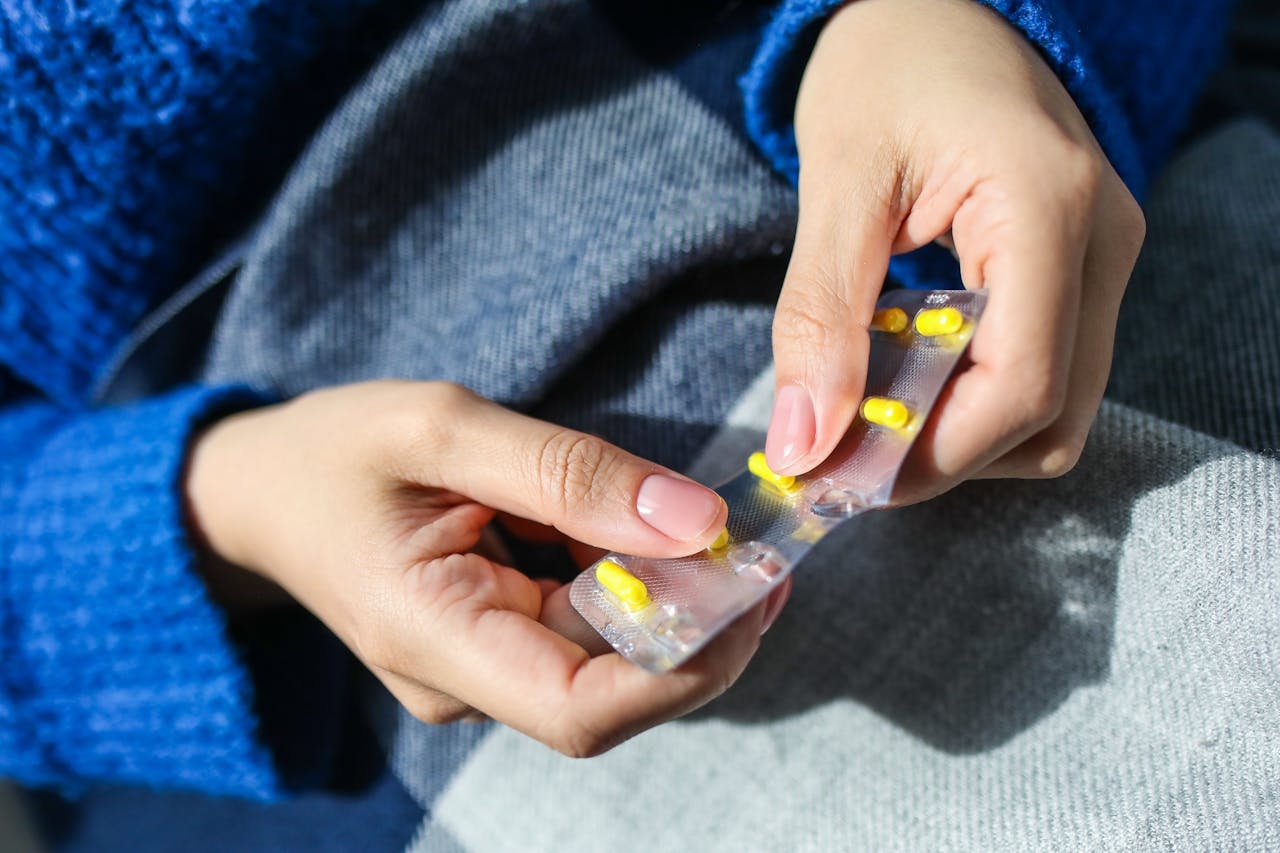
Periolimel n4e emulsion para perfusion

Инструкция по применению Periolimel n4e emulsion para perfusion
Introduction
Prospecto:information for the user
PeriOlimelN4E emulsion for perfusion
Read this prospect carefully before this medicine is administered to you, because it contains important information for you.
- Keep this prospect, as you may need to read it again.
- If you have any doubts, consult your doctor or nurse.
- Ifyou experienceadverse effects,consult yourdoctor ornurseeven if they are not listed in this prospect. See section 4.
1.What isPeriOlimelN4E and what it is used for
2.What you need to know before PeriOlimelN4E is administered
3.How PeriOlimelN4E will be administered
4.Possible adverse effects
5.Storage ofPeriOlimelN4E
6.Contents of the package and additional information
1. What is PeriOlimel N4E and what is it used for
PeriOlimelis a perfusion emulsion. It is presented in a bag with 3 chambers
One chamber contains a glucose solution with calcium, the second contains a lipid emulsion, and the third contains an amino acid solution with other electrolytes.
PeriOlimelis used to feed adults and children over two years of age through a tube in a vein when normal oral feeding is not possible
PeriOlimelshould only be used under medical supervision.
2. What you need to know before you receive PERIOLIMEL N4E
PERIOLIMEL N4Eshould not be administered:
- to premature neonates, infants, and children under two years of age
- if you are hypersensitive (allergic) to egg proteins, soybean proteins, peanut proteins, corn or corn products (see also the section “Warnings and precautions” below), or to any of the other components of this medication (including in section 6).
- if your body has problems using certain amino acids.
- if you have especially high levels of fat in your blood
- if you have hyperglycemia (too much sugar in your blood)
- if you have an abnormally high level of any electrolyte (sodium, potassium, magnesium, calcium, and/or phosphorus) in your blood
Your doctor will decide whether or not to administer this medication based on factors such as your age, weight, and clinical condition, along with the results of all the tests performed.
Warnings and precautions
Consult your doctor or nurse before you are administeredPERIOLIMEL.
The administrationtoo quicklyof total parenteral nutrition solutions (TPN) maycause injuries ordeath.
The infusion must be stopped immediately if any abnormal signs or symptoms of an allergic reaction (such as sweating, fever, chills, headache, skin rash, or difficulty breathing) develop.
This medication contains soy oiland egg phospholipids. Soy and egg proteins can cause hypersensitivity reactions. Cross-reactions between soybean proteins and peanut proteins have been observed.
PERIOLIMELcontains corn-derived glucose, which may cause hypersensitivity reactions if you are allergic to corn or corn products (see section “PERIOLIMEL N4E should not be administered” above).
Difficulty breathingcould also be a sign thatsmall particleshave formed in the lungsthat blockblood vessels (vascular pulmonary precipitates).If you experienceanydifficulty breathing,inform your doctor or nurse.They will decide on the course of action.
The antibioticcalledceftriaxoneshould not be mixedor administered simultaneouslywith solutions that contain calcium(includingPERIOLIMEL)administered through a vein.
These medications should not be administered together, not eventhrough differentlines orsites of infusion.
However,PERIOLIMELand ceftriaxonecan be administered sequentially one after the other if used through separate infusion lines in different locations, or if the infusion lines are replaced or thoroughly flushed with physiological saline solutionbetweeninfusionsto prevent the formation of precipitates(formation ofparticlesofceftriaxoneandcalcium chloride).
Certain medications and diseases may increase the risk of developing infections or sepsis (bacteria in the blood). There is a risk of infection or sepsis especially when a catheter (intravenous catheter) is placed in a vein. Your doctor will closely monitor you for signs of infection.
Patients who require parenteral nutrition (administration of nutrients through a tube inserted into a vein) may be more prone to infections due to their medical condition. The use of “aseptic techniques” (germ-free) when placing and maintaining the catheter and preparing the parenteral nutrition formula (PNF) can reduce the risk of infection.
If you are severely malnourished to the point where you need to receive intravenous nutrition, your doctor will initiate treatment slowly. Additionally, your levels of fluids, vitamins, electrolytes, and minerals will be closely monitored to avoid sudden changes.
Before starting the infusion, any metabolic disorders and fluid and electrolyte imbalances in your body will be corrected. Your doctor will monitor your condition while you are receiving this medication and may adjust the dose or add other nutrients, such as vitamins, electrolytes, and oligoelements if necessary.
There have been reports of liver disorders, including problems with bile elimination (cholestasis), fat storage (steatosis), fibrosis, which may lead to liver insufficiency, as well as cholecystitis and cholelithiasis in patients receiving intravenous nutrition. It is believed that the cause of these disorders is due to multiple factors and may differ between patients. If you experience symptoms such as nausea, vomiting, abdominal pain, yellowing of the skin or eyes, consult your doctor to identify possible contributing factors and potential therapeutic and preventive measures.
Your doctor should know if you have:
-any severe kidney problems. You should also inform your doctor if you are receiving dialysis (artificial kidney) treatment or have another type of treatment to clean your blood
-any severe liver problems
-any coagulation disorders of the blood
-abnormal functioning of the adrenal glands (adrenal insufficiency). The adrenal glands are triangular in shape and are located above the kidneys
-heart failure
-lung disease
-fluid accumulation in the body (hyperhydration)
-insufficient fluid in the body (dehydration)
-excessive sugar in the blood (diabetes mellitus) without treatment
-heart attack or shock due to sudden heart failure
-severe metabolic acidosis (blood too acidic)
-generalized infection (septicemia)
-coma
To check the effectiveness and safety of administration, your doctor will perform laboratory and clinical tests while you are receiving this medication. If you are receiving this medication for several weeks, your blood will be regularly analyzed.
The decrease in the body's ability to eliminate the fats contained inthis medicationmay lead to a “fatty acid overload syndrome” (see section 4 “Possible adverse effects”).
If during the infusion you notice pain, burning, or swelling at the infusion site or infusion leaks, inform your doctor or nurse. The administration will be stopped immediately and resumed in another vein.
If your blood sugar levels become too high, your doctor will adjust the infusion rate ofPERIOLIMELor administer medication to control blood sugar levels (insulin).
PERIOLIMELcan be administered through a tube (catheter) connected to a vein in your arm or a large vein in your chest (central vein).
Children and adolescents
If your child is under 18 years old, special attention will be paid to the correct dosage administration. Additional precautions will also be taken due to the increased sensitivity of children to the risk of infection. Vitamin and oligoelement supplementation is always necessary. Pediatric formulations should be used.
Use ofPERIOLIMELwith other medications
Inform your doctor if you are taking or using, have taken or used recently, or may need to take or use any other medication.
The simultaneous absorption of other medications is generally not a contraindication.If you are taking other medications, obtained with a prescription or without one, you should consult your doctor in advance to check if they are compatible.
Inform your doctor if you are taking or receiving any of the following medications:
- insulin
- heparin
PERIOLIMELshould not be administered simultaneously with blood through the same infusion route.
PERIOLIMELcontains calcium. It should not be administered together or through the same infusion route with the antibiotic ceftriaxone because they may form particles.If the samedevice is used to administerthese medications sequentially, it should be thoroughly flushed.
Due to the risk of precipitation,PERIOLIMELshould not be administered through the same infusion route or mixed with the antibiotic ampicillin or the antiepileptic fosphenytoin.
The soy and olive oils present inPERIOLIMELcontain vitamin K. This usually does not affect blood-thinning medications (anticoagulants) such as warfarin. However, if you are taking anticoagulants, you should inform your doctor.
The lipids contained in this emulsion may interfere with the results of certain laboratory tests if the blood sample is taken before the lipids have been eliminatedfrom your bloodstream(they are usually eliminated within 5 to 6 hours without receiving the lipids).
PERIOLIMELcontains potassium. You should be cautious in patients taking diuretics, ACE inhibitors, angiotensin II receptor antagonists (blood pressure medications), or immunosuppressants. These classes of medications may increase potassium levels in the blood.
Pregnancy and lactation
If you are pregnant or breastfeeding, or think you may be pregnant, consult your doctor before receiving this medication.
There are no adequate experiences with the use of PERIOLIMEL in pregnant women or breastfeeding women. PERIOLIMELcan be used during pregnancy and lactation if necessary. PERIOLIMEL should only be administered to pregnant women or breastfeeding women after careful consideration.
Driving and operating machinery
Not applicable.
3. How PERIOLIMEL N4E Will Be Administered
Dose
PERIOLIMELshould only be administered to adults and children over two years old.
It is an emulsion for infusion, meaning it should be administered through a tube (catheter) connected to a vein in your arm or a large vein in your (central vein).
PERIOLIMELmust be at room temperature before use.
PERIOLIMELis for single use only.
Dose – Adults
Your doctor will determine a perfusion rate based on your needs and clinical condition.
The administration may continue for as long as necessary, based on your clinical condition.
Dose – Children over two years and adolescents
Your doctor will decide on the dose and duration of administration, based on age, weight, height, clinical condition, and the body's ability to break down and utilize the ingredients ofPERIOLIMEL.
If you have been administeredmorePERIOLIMEL N4Ethan you should have
If the administered dose is too high or the infusion is too rapid, the amino acid content may make your blood too acidicand signs of hypervolemia (increased circulating blood volume) may occur.Your blood glucose and urine levels may increase, a hyperosmolar syndrome (excessive blood viscosity) may develop, and the lipid content may increase your blood triglycerides. A rapid or excessive infusion ofPERIOLIMELmay cause nausea, vomiting, chills, headache, heat, excessive sweating (hyperhidrosis), and electrolyte imbalances. In this case, the infusion should be stopped immediately.
In severe cases, your doctor may need to perform temporary renal dialysis to help your kidneys eliminate excess product.
To prevent these cases, your doctor will regularly monitor your condition and analyze your blood parameters.
If you have any other questions about the use of this product, ask your doctor.
In case of overdose or accidental ingestion, consult the Toxicology Information Service. Phone 915.620.420
4. Possible Adverse Effects
Like all medicines, this medicine may cause side effects, although not everyone will experience them. If you notice that you do not feel as you did before, inform your doctor or nurse immediately.
The tests your doctor will perform while you are taking this medicine should minimize the risk of side effects.
If any abnormal sign or symptom of an allergic reaction develops, such as sweating, fever, chills, headache, skin rash, or difficulty breathing, you should stop the infusion immediately.
The following side effects have been described withPeriOlimel:
Frequency – common: may affect up to 1 in 10 people
- Accelerated heart rate (tachycardia).
- Decreased appetite.
- Increased level of fats in the blood (hypertriglyceridemia).
- Abdominal pain.
- Diarrhea.
- Nausea.
- Elevated blood pressure (hypertension).
Frequency - Unknown: cannot be estimated from available data
- Allergic reactions that include sweating, fever, chills, headache, skin rash (erythematous, papular, pustular, macular, generalized rash), itching, hot flashes, difficulty breathing.
- Leaks of the infusion into the surrounding tissue (extravasation) may cause pain at the infusion site, irritation, swelling/edema, redness/heat, skin cell death (skin necrosis) or blisters/blisters, inflammation, thickening or constriction of the skin.
- Vomiting.
The following side effects have been described with other similar parenteral nutrition products:
Frequency - Very rare: may affect up to 1 in 10,000 people
- Reduced ability to eliminate fats (fatty acid overload syndrome) associated with a sudden and severe worsening of the patient's medical condition. The following symptoms of fatty acid overload syndrome are normally reversible when the infusion of the lipid emulsion is stopped:
- Fever.
- Decreased red blood cells, which may cause pale skin and produce weakness or difficulty breathing (anemia).
- Low white blood cell count, which may increase the risk of infection (leucopenia).
- Low platelet count, which may increase the risk of bleeding and/or hemorrhage (thrombocytopenia).
- Blood clotting disorders that affect the blood's ability to clot
- Elevated levels of fats in the blood (hyperlipidemia).
- Fatty liver filtration (hepatomegaly).
- Worsening of liver function.
- Manifestations of the central nervous system (e.g. coma).
Frequency - Unknown: cannot be estimated from available data
- Allergic reactions.
- Problems with bile elimination (cholestasis).
- Abnormal blood test results for liver function.
- Enlarged liver (hepatomegaly).
- Diseases associated with parenteral nutrition (see "Warnings and precautions" in section 2).
- Jaundice.
- Decreased platelet count (thrombocytopenia).
- Increased levels of nitrogen in the blood (azotemia).
- Increased liver enzymes.
- The formation ofsmall particlesthat maylead to theobstruction of blood vessels in the lungs(vascular pulmonary precipitates)resulting inpulmonary vascular embolismand difficulty breathing(difficulty breathing)
Reporting of side effects:
If you experience any type of side effect, consult your doctor or nurse, even if it is a possible side effect that does not appear in this leaflet. You can also report them directly through the Spanish System for the Pharmacovigilance of Medicines for Human Use: https://www.notificaram.es. By reporting side effects, you can contribute to providing more information on the safety of this medicine.
5. Conservation of PeriOlimel N4E
Keepthis medication out of the sight and reachof children.
Do not usethis medicationafter the expiration date that appears on the packaging and outer packaging (MM/YYYY).The expiration date is the last day of the month indicated.
Do not freeze.
Store in the overwrap.
Medications should not be disposed of through drains or trash. Ask your pharmacist how to dispose of unused packaging and medications. By doing so, you will help protect the environment..
6. Contents of the packaging and additional information
Composition ofPERIOLIMEL N4Eemulsion for perfusion
The active ingredients of each bag of the reconstituted emulsion are a solution of L-amino acids at 6.3% (corresponding to 6.3 g/100 ml of alanine, arginine, glycine, histidine, isoleucine, leucine, lysine (as lysine acetate), methionine, phenylalanine, proline, serine, threonine, tryptophan, tyrosine, valine, aspartic acid, and glutamic acid) with electrolytes (sodium, potassium, magnesium, phosphate, acetate, and chloride), an emulsion of lipids at 15% (corresponding to 15 g/100 ml of refined olive oil and refined soybean oil) and a solution of glucose at 18.75% (corresponding to 18.75 g/100 ml as monohydrated glucose) with calcium.
The other components are:
Compartment of the lipid emulsion | Compartment of the amino acid solution | Compartment of the glucose solution |
Phospholipids of purified egg, glycerol, sodium oleate, sodium hydroxide (for pH adjustment), water for injectable preparations | Glacial acetic acid (for pH adjustment), water for injectable preparations | Hydrochloric acid (for pH adjustment), water for injectable preparations |
Aspect ofPERIOLIMEL N4Eand contents of the package
PERIOLIMELis a perfusion emulsion conditioned in a 3-compartment bag. One compartment contains a lipid emulsion, another a solution of amino acids with electrolytes, and the third a solution of glucose with calcium. These compartments are separated by non-permanent seals. Before administration, the contents of the compartments must be mixed by rotating the bag from the top of the bag until thesealsare open.
Aspect before reconstitution:
- The amino acid and glucose solutions are transparent, colorless, or slightly yellowish.
- The lipid emulsion is homogeneous and white.
Aspect after reconstitution: Emulsified milk-like.
The tricompartimental bag is a plastic bag with multiple layers. The material of the inner layer (contact) of the bag is designed to be compatible with the components and authorized additives
To prevent contact with the oxygen in the air, the bag is packaged in an overbag that acts as an oxygen barrier, which contains a sticker with an oxygen absorber.
Package sizes
Bag of 1000 ml: 1 carton box with 6 bags
Bag of 1500 ml: 1 carton box with 4 bags
Bag of 2000 ml: 1 carton box with 4 bags
Bag of 2500 ml: 1 carton box with 2 bags
1 bag of 1000 ml, 1500 ml, 2000 ml, and 2500 ml
Only some package sizes may be marketed.
Marketing authorization holder
Baxter S.L.
Pouet de Camilo 2, 46394 Ribarroja del Turia (Valencia)
Responsible for manufacturing
Baxter S.A., Boulevard René Branquart, 80, 7860 Lessines, Belgium
This medicinal product is authorized in the member states of the European Economic Area with the following names:
France, Portugal, Bulgaria, Romania, Czech Republic, Belgium, Spain, Slovak Republic, Luxembourg, Slovenia: PERIOLIMEL N4E
In some countries, it is registered with different names as described below: Estonia, Poland, Lithuania, Latvia, Greece, Cyprus: Olimel Peri N4E
Netherlands: Olimel Perifeer N4E
Italy: Olimel Periferico N4E
Austria: PeriOLIMEL 2.5% with electrolytes
Germany: Olimel Peri 2.5% E
Denmark, Iceland, Sweden, Norway, Finland: Olimel Perifer N4E
United Kingdom, Ireland, and Malta: Triomel Peripheral 4g/l nitrogen 700 kcal/l with electrolytes
Hungary: PeriOlimel 4 g/l nitrogen with electrolytes emulsified infusion
Last review date of this leafletApril 2020
The detailed and updated information on this medicinal product is available on the website of the Spanish Agency for Medicines and Medical Devices (AEMPS) http://www.aemps.gob.es/
This information is intended solely for healthcare professionals
Pharmacotherapeutic group: parenteral nutrition solutions / combinations
ATC code: B05 BA10.
A.Qualitative and quantitative composition
PeriOlimelis presented in the form of a 3-compartment bag. Each bag contains a solution of glucose with calcium, a lipid emulsion, and a solution of amino acids with other electrolytes
Content per bag | ||||
1000 ml | 1500 ml | 2000 ml | 2500 ml | |
Solution of glucose at 18.75% (corresponding to 18.75 g/100 ml) | 400 ml | 600 ml | 800 ml | 1000 ml |
Solution of amino acids at 6.3% (corresponding to 6.3 g/100 ml) | 400 ml | 600 ml | 800 ml | 1000 ml |
Lipid emulsion at 15% (corresponding to 15 g/100 ml) | 200 ml | 300 ml | 400 ml | 500 ml |
After mixing the contents of the 3 compartments, the composition of the reconstituted emulsion is indicated in the following table for each size of the bag.
Active principles | 1000 ml | 1500 ml | 2000 ml | 2500 ml |
Refined olive oil + refined soybean oil Arginine Aspartic acid Glutamic acid Glycine Histidine Isoleucine Leucine Lysine (equivalent to Lysine acetate) Methionine Phenylalanine Proline Serine Threonine Tryptophan Tyrosine Valine Sodium acetate trihydrate Glycerophosphate sodium hydrate Potassium chloride Magnesium chloride hexahydrate Calcium chloride dihydrate Glucose (equivalent to monohydrated glucose) |
3.66 g 2.48 g 0.73 g 1.26 g 1.76 g 1.51 g 1.26 g 1.76 g 1.99 g (2.81 g) 1.26 g 1.76 g 1.51 g 1.00 g 1.26 g 0.42 g 0.06 g 1.62 g 1.16 g 1.91 g 1.19 g 0.45 g 0.30 g 75.00 g (82.50 g) |
5.50 g 3.72 g 1.10 g 1.90 g 2.63 g 2.26 g 1.90 g 2.63 g 2.99 g (4.21 g) 1.90 g 2.63 g 2.26 g 1.50 g 1.90 g 0.64 g 0.10 g 2.43 g 1.73 g 2.87 g 1.79 g 0.67 g 0.44 g 112.50 g (123.75 g) |
7.33 g 4.96 g 1.46 g 2.53 g 3.51 g 3.02 g 2.53 g 3.51 g 3.98 g (5.62 g) 2.53 g 3.51 g 3.02 g 2.00 g 2.53 g 0.85 g 0.13 g 3.24 g 2.31 g 3.82 g 2.38 g 0.90 g 0.59 g 150.00 g (165.00 g) |
9.16 g 6.20 g 1.83 g 3.16 g 4.39 g 3.77 g 3.16 g 4.39 g 4.98 g (7.02 g) 3.16 g 4.39 g 3.77 g 2.50 g 3.16 g 1.06 g 0.16 g 4.05 g 2.89 g 4.78 g 2.98 g 1.12 g 0.74 g 187.50 g (206.25 g) |
(a) Blend of refined olive oil (approximately 80%) and refined soybean oil (approximately 20%) corresponding to a ratio of essential fatty acids / total fatty acids of 20%
The excipients are:
Compartment of the lipid emulsion | Compartment of the amino acid solution with electrolytes | Compartment of the glucose solution with calcium |
Phospholipids of purified egg, glycerol, sodium oleate, sodium hydroxide (for pH adjustment), water for injectable preparations | Glacial acetic acid (for pH adjustment), water for injectable preparations | Hydrochloric acid (for pH adjustment), water for injectable preparations |
The reconstituted emulsion provides the following for each size of bag:
1000 ml | 1500 ml | 2000 ml | 2500 ml | |
Lipids | 30 g | 45 g | 60 g | 75 g |
Amino acids | 25.3 g | 38.0 g | 50.6 g | 63.3 g |
Nitrogen | 4.0 g | 6.0 g | 8.0 g | 10.0 g |
Glucose | 75.0 g | 112.5 g | 150.0 g | 187.5 g |
Energy: | ||||
Total calories approx. | 700 kcal | 1050 kcal | 1400 kcal | 1750 kcal |
Non-protein calories | 600 kcal | 900 kcal | 1200 kcal | 1500 kcal |
Glucose calories | 300 kcal | 450 kcal | 600 kcal | 750 kcal |
Lipid calories (a) | 300 kcal | 450 kcal | 600 kcal | 750 kcal |
Protein calories / nitrogen ratio | 150 kcal/g | 150 kcal/g | 150 kcal/g | 150 kcal/g |
Glucose / lipid calories ratio | 50/50 | 50/50 | 50/50 | 50/50 |
Lipid calories / total | 43% | 43% | 43% | 43% |
Electrolytes: | ||||
Sodium | 21.0 mmol | 31.5 mmol | 42.0 mmol | 52.5 mmol |
Potassium | 16.0 mmol | 24.0 mmol | 32.0 mmol | 40.0 mmol |
Magnesium | 2.2 mmol | 3.3 mmol | 4.4 mmol | 5.5 mmol |
Calcium | 2.0 mmol | 3.0 mmol | 4.0 mmol | 5.0 mmol |
Phosphate (b) | 8.5 mmol | 12.7 mmol | 17.0 mmol | 21.2 mmol |
Acetate | 27 mmol | 41 mmol | 55 mmol | 69 mmol |
Chloride | 24 mmol | 37 mmol | 49 mmol | 61 mmol |
pH | 6.4 | 6.4 | 6.4 | 6.4 |
Osmolarity | 760 mOsm/l | 760 mOsm/l | 760 mOsm/l | 760 mOsm/l |
aIncludes calories from egg phospholipids
bIncludes phosphate provided by the lipid emulsion
B.Dosage and administration
Dosage
No recommendation is made for the use ofPERIOLIMELin children under 2 years, as neither the composition nor the volume is suitable (see sections 4.4, 5.1, and 5.2 of the SmPC).
The maximum daily dose mentioned below should not be exceeded. Due to the invariable composition of the multicompartimental bag, the ability to meet the patient's needs for all nutrients may not be possible. There may be clinical situations in which the patient requires amounts of nutrients that vary from the composition of the bag. In this situation, any adjustment of volume (dose) should take into account the resulting effect on the dosing of the rest of the nutrients of PERIOLIMEL.
In adults
The dose dependson the patient's energy expenditure, their clinical status, their body weight, and their ability to metabolize the components ofPERIOLIMEL, as well as the additional energy or protein administeredby the oral or enteral route. Therefore, the appropriate size of the bag should be chosen.
The average daily needs are:
- From 0.16 to 0.35 g of nitrogen/kg of body weight (from 1 to 2 g of amino acids/kg), depending on the patient's nutritional status and the level of catabolic stress.
- From 20 to 40 kcal/kg.
- From 20 to 40 ml of liquid/kg, or 1 to 1.5 ml per kcal consumed.
ForPeriOlimel, the maximum daily dose is defined by the intake of liquid, 40 ml/kg, corresponding to 1 g/kg of amino acids, 3 g/kg of glucose, 1.2 g/kg of lipids, 0.8 mmol/kg of sodium, and 0.6 mmol/kg of potassium. For a 70 kg patient, this would correspond to 2800 ml ofPeriOlimelper day, which would provide 71 g of amino acids, 210 g of glucose, and 84 g of lipids, i.e., 1680 non-protein calories and 1960 total calories.
Normally, the administration rate should be increased gradually during the first hour and then adjusted according to the dose being administered, the daily intake of volume, and the duration of the perfusion.
ForPeriOlimel, the maximum perfusion rate is 3.2 ml/kg/hour, corresponding to 0.08 g/kg/hour of amino acids, 0.24 g/kg/hour of glucose, and 0.10 g/kg/hour of lipids.
In children over 2 years and adolescents
No studies have been conducted in the pediatric population.
The dose dependson the patient's energy expenditure, their clinical status, their weight, and their ability to metabolize the components ofPERIOLIMEL, as well as the additional energy and protein administeredby the oral or enteral route. Therefore, the appropriate size of the bag should be chosen.
Additionally, the daily needs of liquid, nitrogen, and energy decrease continuously with age: Two age groups are considered, one between 2 and 11 years, and another between 12 and 18 years
ForPERIOLIMELN4E, in both age groups, the concentration of magnesium is the limiting factor for the daily dose. In the 2-11 year age group, the concentration of lipids is the limiting factor for the hourly rate. In the 12-18 year age group, the concentration of glucose is the limiting factor for the hourly rate. The resulting intakes are as follows:
Constituent | 2-11 years | 12-18 years | ||
Recommendeda | PERIOLIMEL | Recommendeda | PERIOLIMEL | |
Maximum daily doses | ||||
Fluid (ml/kg/day) | 60 – 120 | 45 | 50 – 80 | 45 |
Amino acids (g/kg/day) | 1 – 2 (up to 2.5) | 1.1 | 1 – 2 | 1.1 |
Glucose (g/kg/day) | 1.4 – 8.6 | 3.4 | 0.7 – 5.8 | 3.4 |
Lipids (g/kg/day) | 0.5 - 3 | 1.4 | 0.5 - 2 (up to 3) | 1.4 |
Total energy (kcal/kg/day) | 30 – 75 | 31.5 | 20 – 55 | 31.5 |
Maximum hourly rate | ||||
PERIOLIMEL N4E (ml/kg/h) | 4.3 | 3.2 | ||
Amino acids (g/kg/h) | 0.20 | 0.11 | 0.12 | 0.08 |
Glucose (g/kg/h) | 0.36 | 0.33 | 0.24 | 0.24 |
Lipids (g/kg/h) | 0.13 | 0.13 | 0.13 | 0.10 |
a: Recommended values in the 2018 ESPGHAN/ESPEN/ESPR Guidelines
<- Страна регистрации
- Активное веществоАспарагиновая кислотаГлутаминовая кислотаГлицинГистидинИзолейцинАргининСоевое масло, оливковое маслоАланинЛейцинЛизинАцетат лизинаМетионинФенилаланинПролинСеринТреонинТриптофанТирозинВалинАцетат натрия тригидратХлорид калияХлорид магния гексагидратХлорид кальция дигидратГлюкоза ангидратГлюкоза моногидратГлицерофосфат натрия
- Требуется рецептДа
- Производитель
- СоставHidroxido de sodio (e 524) (C.S. PH pH mg), Glicerol (e 422) (3,38 g mg), Oleato de sodio (0,05 g mg)
- Информация носит справочный характер и не является медицинской рекомендацией. Перед приёмом любых препаратов проконсультируйтесь с врачом. Oladoctor не несёт ответственности за медицинские решения, принятые на основе этого контента.
Консультация врача онлайн по поводу Periolimel n4e emulsion para perfusion
Нужна консультация врача?
Получите онлайн-консультацию по вопросам приёма, получения рецепта и альтернативных препаратов.















